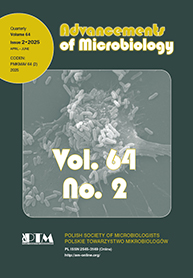KLEBSIELLA PNEUMONIAE – TAXONOMY, OCCURRENCE, IDENTIFICATION, VIRULENCE FACTORS AND PATHOGENICITY
Abstract: Gram-negative bacilli Klebsiella pneumoniae are among the most important pathogens responsible for healthcare-associated infections (HAIs). These bacteria often have high pathogenic and epidemic potential, contributing to infection outbreaks worldwide. K. pneumoniae is part of the natural microbiota of humans. At the same time, as an opportunistic microorganism, when the host organism is weakened, it can cause serious infections such as pneumonia, urinary tract infections, septic infections and intra-organ abscesses. Widespread distribution in nature and exceptional adaptability provide K. pneumoniae with the opportunity to master new niches in the hospital environment, which poses a threat to hospitalized patients. Also, the bacteria are increasingly causing life-threatening infections in the non-hospital environment. The pathogenicity of K. pneumoniae is determined by the presence of many virulence factors such as capsular polysaccharide (CPS, K antigen), lipopolysaccharid (LPS, O antigen), fimbrial and non-fimbrial adhesins, siderophores (aerobactin, enterobactin, salmochelin and yersiniabactin), heat-stabile and heat-labile enterotoxins, cytotoxins and biofilm-forming ability. Currently, hypervirulent strains of K. pneumoniae (hvKp) equipped with new virulence traits constitute a significant danger. The paper presents these bacteria concerning the global threat arising from the dynamic spread of hvKp strains in hospitals in Poland and worldwide.

